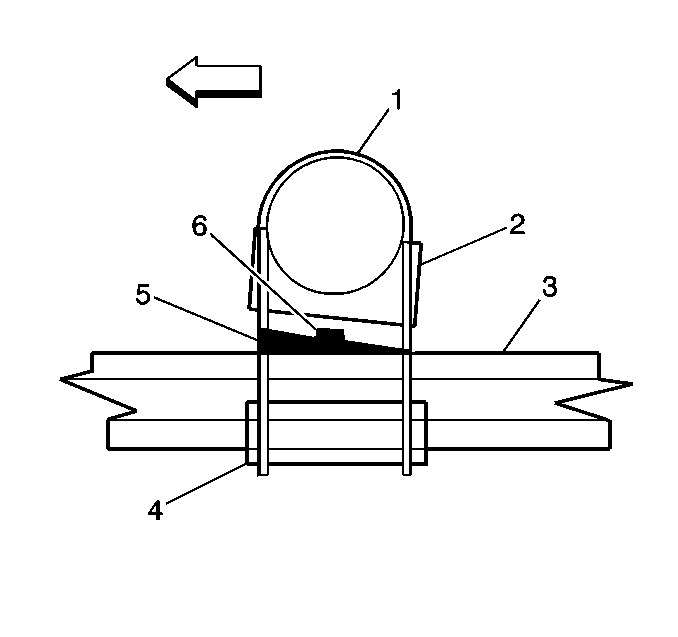Axle Shims
Rear axle wind-up may cause launch shudder even when all of the working angles are within specifications. Rear axle wind-up occurs when heavy torque during acceleration causes the pinion nose to point upward. In order to compensate for axle wind-up, tip the pinion nose downward by installing axle shims incrementally, then performing a road test after each shim is added. Add shims until the road test indicates that the shudder is eliminated.
Wedge shims of different sizes are available through the parts' system and independent suppliers for the purpose of shimming the rear drive axle pinion angle. Wedge shims are available in 2, 3, and 4 degrees. Some wedge shims of 1/2 degree can also be obtained.
- Choose a wedge shim based on the results obtained through performing the Driveline Working Angles Measurement .
- Remove the leaf spring U-bolts. Refer to Leaf Spring Replacement in Rear Suspension.
- Install the axle shims (5) in order to increase or decrease the angle of the rear axle pinion. Install the shims between the leaf spring (3) and the spring seat (2).
- Install the U-bolts. Refer to Leaf Spring Replacement in Rear Suspension.
Caution: Never attempt to shim a rear axle using anything except shims that are designed for this purpose. Failure to do so will result in the shims falling out and a loss of vehicle control and that could cause personal injury.

Important: After installing the shims, ensure that the U-bolt has 2 or 3 threads above the nut. Ensure also that the center bolt, located in the spring seat, is long enough to seat in the locator hole. If these 2 conditions do not exist, use longer U-bolts and center bolts. Longer U-bolts and center bolts are available through local spring shops.
Transmission Shims

If a transmission requires shims to correct the angle of the output shaft to the propeller shaft, shims can be obtained through the parts distribution system.
Installing most shims will change the transmission angle approximately 1/2 degree.
When shimming transmissions, use a shim made from steel stock at the necessary thickness. Ensure that the shim contacts the full width of the area to be shimmed. Do not use washers.
Support Bearing Assembly
Ensure that the propeller shaft support bearing assembly(ies), if equipped, are properly installed. If a support bearing assembly is supposed to be installed with a shim or washers, but the shim/washers are not installed, the angles of the adjacent propeller shafts will be affected.
